#tokugawa period
Text



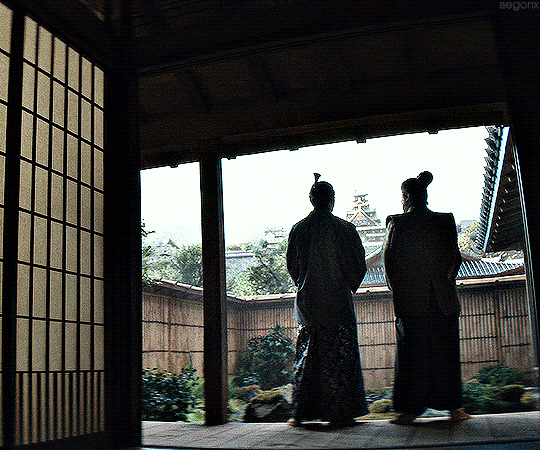


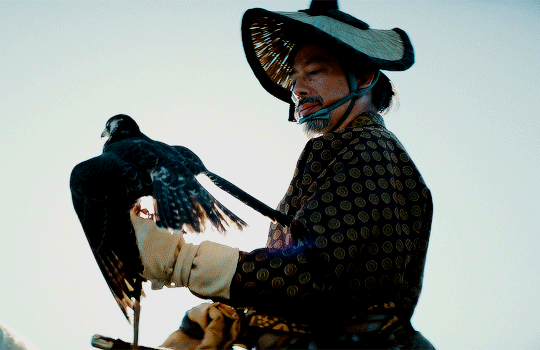
ꜱʜŌɢᴜɴ ✾ 2024
some of my fav shots (that've been giffed so far ^ ^)
- gif creds attached.
#shogun#shogun fx#samurai aesthetic#aesthetic#hiroyuki sanada#shogunate#lord toranaga#tokugawa period#edo period
21 notes
·
View notes
Text

The Ghost of Asakura Togo by Utagawa Kuniyoshi
Roberts' "Growing up Manly: Male Samurai Childhood in Late Edo-Era Tosa" yields an unexpected mention of depression which I've filed away in my "to write about later" folder for some time.
Here's that passage, spacing and annotations mine.
[Sasaki] Takayuki's father had greater trouble with his own emotions. He blamed himself for causing his brother's suicide, and became sleepless, visiting the brother's grave nightly.
The following year his father became suicidal and slashed his face with a blade. Young Takayuki had to run to the neighbors to ask for help to prevent his father from killing himself.
Takayuki, who had been adopted into the family as an infant, was only 6 years old at the time this happened.
Ultimately the relatives built a cage in the house to keep him in until he recovered.
This sounds very cruel by modern standards, and certainly could be if the family were poor caretakers or had little interest in providing care for their confined relative, but it was a common way for families of the Edo period to deal with a relative suffering from mental health problems, an elderly family member with dementia who might wander, or commonly a problematic teenage son (like Katsu Kaishu's father, Katsu Kokichi).
In a samurai household, cage would have referred to an enclosed space that was either a room in which the doors had been replaced with wooden bars, or a smaller area built into a larger room, and confining a relative required a process of official permissions and inspections.
Outdated terminology for mental illnesses aside, in "Seeing Cages: Home Confinement in Early Twentieth Century Japan", Yumi Kim writes:
The earliest known record of home confinement for those considered mad dates to the mid-1700s. Historians Itahara Kazuko and Kuwabara Haruo argue that Edo households chose home confinement only for members with senior status in the family, namely parents, grandparents, uncles, and heirs.
...
The few extant records of early modern laws and provisions concerning the insane indicate that at least five different groups of people were involved in the process of legally confining a mentally disturbed person: the family, relatives, the five-household group, local officials, and the city or district magistrate. At times a physician's diagnosis was also required."
You can read the rest of the paper here if you're interested in the subject, although it focuses primarily on home confinement from the Taisho era (1912-1926) onward.
Let's get back to Sasaki Takayuki's father, whose confinement put a strain on family finances since he was not carrying out his duties and therefore not receiving any pay, forcing the family to sell of "all weapons and armor" except an heirloom set belonging to his grandfather, and even that had to be sold eventually to make ends meet.
Takayuki's father was deemed better after a year. The family let him out of his cage and he returned to performing his duties. He nevertheless remained an extremely sensitive and difficult person, often so depressed that he could hardly do anything.
It didn't help that a few years later, when Takayuki was a young teenager, the family lost two young children, a 7-month-old girl and a 3-day-old boy, which "sent his generally difficult father into a long period of deep depression".
Takayuki writes about how often he became anxious about his father and the family on this account, but nevertheless said that despite his own status as an adopted son, his father “loved and cared for me deeply. His difficulties were because of his illness."
For additional reading on mental health in pre-modern Japan in English:
Ann-Sofie van Enis, "The Stigmatization of People with a Mental Disorder in Premodern Japan: Research from a Cultural Historical Perspective" (Free, log in with Google or Facebook to download.)
Hiruta Genshiro, "Japanese Psychiatry in the Edo Period" (PDF)
#history notes#historical notes#history reference#historical reference#history research#historical research#edo period#tokugawa period#mental health#depression#content warning: suicide attempt#content warning: confinement
10 notes
·
View notes
Text


Samurai's ranks and dress code in Late Edo period
AMAZING reference chart put together by Nadeshico Rin, showing the different attires worn by the men of the buke class in and about Edo Castle. OP stresses the chart is by no means exhaustive - but it helps picturing things SO MUCH!
For easier reading, I have adapted the chart with english translation. Rin has also created illustrations detailing each attire, I'll translate those in coming days under the tag "samurai kimono".
You'll find the transliteration below cut:
The court ranks - Mibun 身分 or Ikai (位階)
Find more about the exact titles here.
一位 Ichii (First court rank)
三位 Sanmi (Third court rank) and 四位 Shii (Fourth court rank)
Goi 五位 (Fifth court rank)
Omemie ijô 御目見 以上, the "upper" vassals allowed to request audience with the shogun
Omemie ika 御目見 以下, the "lesser" vassals (not allowed to request audience with the shogun)
Rin does not mention the second court rank (二位 Nii) so I am not sure where this one is supposed to go ^^;
The clan/families - Kamei 家名
徳川将軍家 Tokugawa shôgunke (Tokugawa Shogun clan)
尾張徳川家 Owari Tokugawake (Owari Tokugawa clan), 紀伊徳川家 Kii Tokugawake (Kii Tokugawa clan), 水戸徳川家 Mito Tokugawake (Mito Tokugawa clan), 徳川御三卿 Tokugawa gosankyo (Secondary Tokugawa branch clans: Tayasu, Shimizu, and Hitotsubashi)
三奉行 Sanbugyô, & 下三奉行 Shimosan bugyô (magistrates, governors)
旗本 Hatamoto (general term for upper-rank vassals of the Tokugawa)
御家人 Gokenin (general term for lower-rank vassals of the Tokugawa)
Outfits TPO (Time, Place, Occasion)
第一礼服 (大礼 など) Daiichi raifuku (tairei nado) - Most formal outfit worn during State/important ceremonies, etc.
礼服 (正月など) Raifuku (Shogatsu nado) - Formal outfit, worn for events like New Year, etc.
通常礼服 (節句など) Tsûjô raifuku (sekku nado) - Regular
formal outfit, worn during seasonal festivals, etc.
平服 Heifuku - Everyday outfit
Type of outfits
Rin has released separated charts detailing the different costumes. You'll find them translated here in coming days.
束帯 Sokutai - old ceremonial court dress, first worn by Heian nobility. Attire includes the 笏 shaku (flat ritual sceptre), and 冠 kanmuri hat.
衣冠 Ikan - old ceremonial court dress, much more simpler than sokutai
布衣 Hoi - "plain" 狩衣 kariginu (which were informal clothes worn by the nobility from the Heian period and onwards)
素襖 Suô - ceremonial dress of the lower-ranked samurai
直垂 Hitatare - ceremonial court robe
狩衣 Kariginu - patterned kariginu (informal clothes worn by the nobility from the Heian period and onwards)
大紋 Daimon - 直垂 hitatare with large family crests
直衣 Nôshi - everyday robes which were first worn by males of the imperial family during Heian era, and then spread among nobility, etc.
長上下 Naga Kamishimo - outfit pairing a sleeveless ceremonial robe called 肩衣 kataginu, with trailing pants called 長袴 nagabakama
半上下 Han Kamishimo - outfit pairing a sleeveless ceremonial robe called 肩衣 kataginu, with ankle lenght pants called 半袴 hanbakama
#japan#history#fashion history#samurai kimono#samurai#nadeshico rin#edo era#edo period#shogun#tokugawa#ressources#references#Sokutai#Ikan#Hoi#Suo#Hitatare#Kariginu#Daimon#Noshi#Kamishimo#nagakamishimo#hankamishimo#kataginu#hakama#nagabakama#hanbakama#court rank#buke#warrior class
744 notes
·
View notes
Text
Saw some posts of people being upset with Shogun because Lord Toranaga does nothing so far but make use of others. As they were expecting him to fight as they're used to seeing Hiroyuki Sanada being a fearless warrior plunging himself into chaos.
But that's what make this show unique as it's different. He's not a Ronin or a Samurai with nothing to lose anymore, he's a leader. One wrong move means the demise of his entire clan like what happened to Mariko's family clan, that's why Toranaga is very cautious.
He's playing the long game that no one understands but him. That's what makes him difficult to defeat as no one knows what he's really thinking and planning, not even his own followers. You can't survive the warring period by being an open book.
Toranga knew that he's outnumbered as more clans flocked to Ishido's banners by the day. As time goes by, a frontal assault would be impossible and suicidal. Especially now when he's branded a "rebel" against the Council of Regents and the Taiko's heir.
Mariko is the endgame as she finally exposed Ishido's true intentions in holding all the retainer's families hostage and wanting power for himself that even Ochiba, the Taiko's consort is powerless. Now it is likely the other clans will abandon Ishido and flock to Toranaga.
This time, Ishido would be the rebel and Toranaga's war against him would be justified as the clans would recognize him now as the rightful Shogun. Yabu will likely be executed for his treachery, so his province will be under Toranaga's control. He's gaining power.
Now he can make his power move to eliminate Ishido once and for all, and claim the title, Shogun. After all, he's based on the real Tokugawa Ieyasu, who is known for his great patience and cunningness in playing politics, that he's able to unify Japan.
#shogun#shogun fx#shogun 2024#hiroyuki sanada#yoshii toranaga#period drama#jidaigeki#tokugawa ieyasu#samurai#japan
61 notes
·
View notes
Text
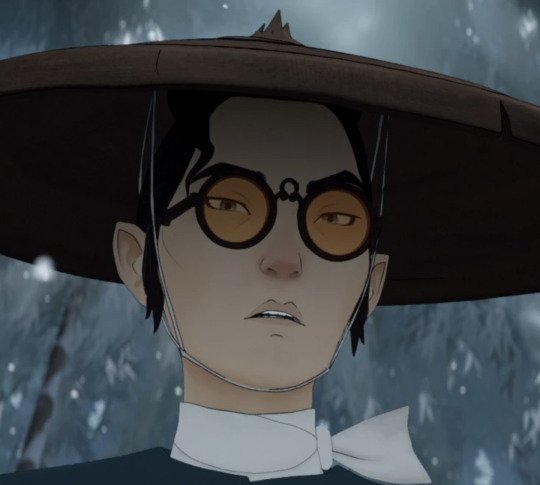
I watched all eight episodes of season 1 of Blue Eye Samurai over the weekend. I then went browsing because I wanted to read some online reviews of the show to see what people were thinking of it and also because I wanted to interact with gifs and art, as the series is visually stunning.
Yet, in my search for opinions on the show, I came across several points I'd like to address in my own words:
Mizu’s history and identity are revealed piece-by-piece and the “peaches” scene with Mizu and Ringo at the lake is intended to be a major character reveal. I think it’s weird that some viewers got angry over other viewers intentionally not gendering Mizu until that reveal, rather than immediately jumping to gender the character as the other characters in the show do. The creators intentionally left Mizu’s gender and sexuality ambiguous (and quite literally wrote in lines to lead audiences to question both) to challenge the viewer’s gut assumption that this lone wolf samurai is a man. That intentional ambiguity will lead to wide and ambiguous interpretations of where Mizu fits in, if Mizu fits in at all. But don't just take my word for this:

Re: above. I also think it’s weird that some viewers got upset over other viewers continuing to acknowledge that Mizu has a very complicated relationship with her gender, even after that reveal. Canonically, she has a very complicated relationship with her identity. The character is intended to represent liminality in identity, where she’s often between identities in a world of forced binaries that aren’t (widely) socially recognized as binaries. But, again, don’t just take my word for this:

Mizu is both white and Japanese, but she is also not white and not Japanese simultaneously (too white to be Japanese and too Japanese to be white). She’s a woman and a man. She’s a man who’s a woman. She’s also a woman who’s not a woman (yet also not quite a man). But she’s also a woman; the creators said so. Mizu was raised as a boy and grew into a man, yet she was born a girl, and boyhood was imposed upon her. She’s a woman when she’s a man, a man when she’s a man, and a woman when she’s a woman.
Additionally, Mizu straddles the line between human and demon. She’s a human in the sense she’s mortal but a demon in the sense she’s not. She's human yet otherworldly. She's fallible yet greatness. She's both the ronin and the bride, the samurai and the onryō. In short, it’s complicated, and that’s the point. Ignoring that ignores a large part of her internal character struggle and development.
Mizu is intended to represent an “other,” someone who stands outside her society in every way and goes to lengths to hide this “otherness” to get by. Gender is a mask; a tool. She either hides behind a wide-brimmed hat, glasses, and laconic anger, or she hides behind makeup, her dress, and a frown. She fits in nowhere, no matter the identity she assumes. Mizu lives in a very different time period within a very different sociocultural & political system where the concept of gender and the language surrounding it is unlike what we are familiar with in our every-day lives. But, again, don’t just take my word for this:

It’s also weird that some viewers have gotten upset over the fact women and queer people (and especially queer women) see themselves in Mizu. Given her complicated relationship with identity under the patriarchy and colonial violence, I think Mizu is a great character for cis-het women and queer folks alike to relate to. Her character is also great for how she breaks the mold on the role of a biracial character in narratives about identity (she’s not some great bridge who will unite everyone). It does not hurt anyone that gender-fluid and nonbinary people see themselves in Mizu's identity and struggle with identity. It does not hurt anyone that lesbians see themselves in the way Mizu expresses her gender. It does not hurt anyone that trans men see themselves in Mizu's relationship with manhood or that trans women can see themselves in Mizu when Mama forces her to be a boy. It's also really cool that cis-het women see themselves in Mizu's struggles to find herself. Those upset over these things are missing critical aspects of Mizu's character and are no different from the other characters in the story. The only time Mizu is herself is when she’s just Mizu (“…her gender was Mizu”), and many of the other characters are unwilling to accept "just Mizu." Accepting her means accepting the complicatedness of her gender.
Being a woman under the patriarchy is complicated and gives women a complicated relationship with their gender and identity. It is dangerous to be a woman. Women face violence for being women. Being someone who challenges sex-prescribed norms and roles under patriarchy also gives someone a complicated relationship with their identity. It is dangerous to usurp gender norms and roles (then combine that with being a woman...). People who challenge the strict boxes they're assigned face violence for existing, too. Being a racial or ethnic minority in a racially homogeneous political system additionally gives someone a complicated relationship with their identity. It is dangerous to be an ethnic minority when the political system is reproduced on your exclusion and otherness. They, too, face violence for the circumstances of their birth. All of these things are true. None of them take away from the other.
Mizu is young-- in her early 20s-- and she has been hurt in deeply affecting ways. She's angry because she's been hurt in so many different ways. She's been hurt by gender violence, like "mama's" misogyny and the situation of her birth (her mother's rape and her near murder as a child), not to mention the violent and dehumanizing treatment of the women around her. She's been hurt by racial violence, like the way she has been tormented and abused since childhood for the way she looks (with people twice trying to kill her for this before adulthood). She's been hurt by state-sanctioned violence as she faces off against the opium, flesh, and black market traders working with white men in contravention of the Shogun's very policies, yet with sanction from the Shogun. She's been hurt by colonial violence, like the circumstances of her birth and the flood of human trafficking and weapons and drug trafficking in her country. She's had men break her bones and knock her down before, but only Fowler sexually differentiated her based on bone density and fracture.
Mizu also straddles the line between victim and murderer.
It seems like Mizu finding her 'feminine' and coming to terms with her 'female side' may be a part of her future character development. Women who feel caged by modern patriarchal systems and alienated from their bodies due to the patriarchy will see themselves in Mizu. They understand a desire for freedom that the narrow archetypes of the patriarchy do not afford them as women, and they see their anger and their desire for freedom in Mizu. This, especially considering that Mizu's development was driven by one of the creators' own experiences with womanhood:
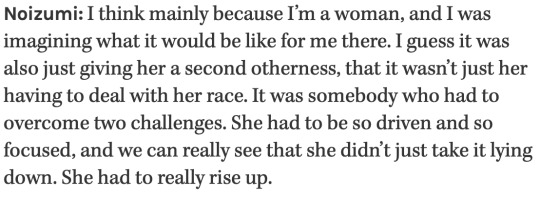
No, Mizu does not pass as a man because she "hates women" or because she hates herself as a woman or being a woman. There are actual on-screen depictions of Mizu's misogyny, like her interactions with Akemi, and dressing like a man is not an instance of this. Mizu shows no discomfort with being a woman or being seen as a woman, especially when she intends to pass herself as and present as a woman. Mizu also shows the women in the series more grace and consideration than any man in the show, in whatever capacity available to her socially and politically, without revealing herself; many of the women have remarked that she is quite unlike other men, and she's okay with that, too.
When she lives on the farm with Mama and Mikio, Mizu shows no discomfort once she acclimates to the new life. But people take this as conclusive evidence of the "only time" she was happy. She was not. This life was also a dance, a performance. The story of her being both the ronin and the onryō revealed to the audience that this lifestyle also requires her to wear a mask and dance, just as the bride does. This mask is makeup, a wedding dress, and submission, and this performance is her gender as a wife. She still understands that she cannot fully be herself and only begins to express happiness and shed her reservation when she believes she is finally safe to be herself. Only to be betrayed. Being a man is her safety, and it is familiar. Being a boy protected her from the white men as a child, and it might protect her heart now.
Mizu shows no discomfort with being known as a woman, except when it potentially threatens her goals (see Ringo and the "peaches" scene). She also shows no discomfort with being known as, seen as, or referred to as a man. As an adult, she seems okay- even familiar- with people assuming she's a man and placing her into the role of a man. Yet, being born a girl who has boyhood violently imposed upon her (she did not choose what mama did to her) is also an incredibly important part of her lived experience. Being forced into boyhood, but growing into a man anyway became part of who she is. But, being a man isn’t just a part of who she became; it’s also expedient for her goals because men and women are ontologically different in her world and the system she lives under.
She's both because she's neither, because- ontologically- she fits nowhere. When other characters point out how "unlike" a man she is, she just shrugs it off, but not in a "well, yeah, because I'm NOT a man" sort of way, but in an "I'm unlike anyone, period," sort of way. She also does not seem offended by Madam Kaji saying that Mizu’s more man than any who have walked through her door.
(Mizu doesn’t even see herself as human, let alone a woman, as so defined by her society. And knowing that creators have stated her future arc is about coming into her “feminine era” or energy, I am actually scared that this show might fall into the trope of “domesticating”/“taming” the independent woman, complete with an allegory that her anger and lack of human-ness [in Mizu’s mind] is a result of a woman having too much “masculine energy” or being masculine in contravention of womanness.)
Some also seem to forget that once Mama and Mikio are dead, no one knows who she is or where she came from. They do not have her background, and they do not know about the bounty on her (who levied the bounty and why has not yet been explained). After their deaths, she could have gone free and started anew somehow. But in that moment, she chose to go back to life as a man and chose to pursue revenge for the circumstances of her birth. Going forward, this identity is no longer imposed upon her by Mama, or a result of erroneous conclusions from local kids and Master Eiji; it was because she wanted people to see her as a man and she was familiar with navigating her world, and thus her future, as a man. And it was because she was angry, too, and only men can act on their anger.
I do think it important to note that Mizu really began to allow herself to be vulnerable and open as a woman, until she was betrayed. The question I've been rattling around is: is this because she began to feel safe for the first time in her life, or is this part of how she sees women ontologically? Because she immediately returns to being a man and emotionally hard following her betrayal. But, she does seem willing to confide in Master Eiji, seek his advice, and convey her anxieties to him.
Being a man also confines Mizu to strict social boxes, and passing herself as a man is also dangerous.
Mizu doesn't suddenly get to do everything and anything she wants because she passes as a man. She has to consider her safety and the danger of her sex being "found out." She must also consider what will draw unnecessary attention to her and distract her from her goals. Many viewers, for example, were indignant that she did not offer to chaperone the mother and daughter and, instead, left them to the cold, only to drop some money at their feet later. The indignity fails consider that while she could bribe herself inside while passing as a man, she could not bribe in two strangers. Mizu is a strange man to that woman and does not necessarily have the social position to advocate for the mother and daughter. She also must consider that causing small social stirs would distract from her goals and draw certain attention to her. Mizu is also on a dangerous and violent quest.
Edo Japan was governed by strict class, age, and gender rules. Those rules applied to men as well as women. Mizu is still expected to act within these strict rules when she's a man. Being a man might allow her to pursue revenge, but she's still expected to put herself forward as a man, and that means following all the specific rules that apply to her class as a samurai, an artisan (or artist), and a man. That wide-brimmed hat, those orange-tinted glasses, and her laconic tendencies are also part of a performance. Being a boy is the first mask she wore and dance she performed, and she was originally (and tragically) forced into it.
Challenging the normative identities of her society does not guarantee her safety. She has limitations because of her "otherness," and the transgression of sex-prescribed roles has often landed people in hot water as opposed to saving them from boiling. Mizu is passing herself off as a man every day of her life at great risk to her. If her sex is "found out" on a larger scale, society won’t resort to or just start treating her as a woman. There are far worse fates than being perceived as a woman, and hers would not simply be a tsk-tsk, slap on the wrist; now you have to wear makeup. Let's not treat being a woman-- even with all the pressures, standards, fears, and risks that come with existing as a woman-- as the worst consequence for being ‘found out’ for transgressing normative identity.
The violence Mizu would face upon being "found out" won’t only be a consequence of being a "girl." Consider not just the fact she is female and “cross-dressing” (outside of theater), but also that she is a racial minority.
I also feel like many cis-het people either ignore or just cannot see the queerness in challenging gender roles (and thus also in stories that revolve around a subversion of sex-prescribed gender). They may not know how queerness-- or "otherness"-- leads to challenging strict social stratifications and binaries nor how challenging them is seen by the larger society as queer ("strange," "suspicious," "unconventional," even "dishonorable," and "fraudulent"), even when "queerness" (as in LGBTQ+) was not yet a concept as we understand it today.
Gender and sexuality- and the language we use to communicate who we are- varies greatly across time and culture. Edo Japan was governed by strict rules on what hairstyles, clothes, and weapons could be worn by which gender, age, and social group, and this was often enshrined in law. There were specific rules about who could have sex with whom and how. These values and rules were distinctly Japanese and would not incorporate Western influences until the late 1800s. Class was one of the most consequential features to define a person's fate in feudal Japan, and gender was quite stratified. This does not mean it's inappropriate for genderqueer people to see themselves in Mizu, nor does this mean that gender-variant identities didn’t exist in Edo Japan.
People in the past did not use the same language we do today to refer to themselves. Example: Alexander The Great did not call himself a "bisexual." We all understand this. However, there is a very weird trend of people using these differences in language and cultures across time to deny aspects of a historical person's life that societies today consider taboo, whether these aspects were considered taboo during that historical time period or not. Same example: people on Twitter complaining that Netflix "made" Alexander The Great "gay," and after people push back and point out that the man did, in fact, love and fuck men, hitting back with "homosexuality wasn't even a word back then" or "modern identity didn't exist back then." Sure, that word did not exist in 300s BCE Macedonia, but that doesn't mean the man didn't love men, nor does that mean that we can't recognize that he'd be considered "queer" by today's standards and language.
Genderqueer, as a word and as the concept is understood today, did not exist in feudal Japan, but the people did and feudal Japan had its own terms and concepts that referred to gender variance. But while the show takes place in Edo Japan, it is a modern adult animation series made by a French studio and two Americans (nationality). Mizu is additionally a fictional character, not a historical figure. She was not created in a vacuum. She was created in the 21st century and co-written by a man who got his start writing for Sex in the City and hails from a country that is in the midst of a giant moral panic about genderqueer/gender-variant people and gender non-conforming people.
This series was created by two Americans (nationality) for an American company. In some parts of that country, there are laws on the book strictly defining the bounds of men and women and dictating what clothes men and women could be prosecuted for wearing. Changes in language and identity over time mean that we can recognize that if Mizu lived in modern Texas, the law would consider her a drag performer, and modern political movements in the show creators' home country would include her under the queer umbrella.
So, yeah, there will also be genderqueer people who see themselves in Mizu, and there will be genderqueer fans who are firm about Mizu being queer to them and in their “headcanons.” The scene setting being Edo Japan, does not negate the modern ideas that influence the show. "Nonbinary didn't exist in Edo Japan" completely ignores that this show was created to explore the liminality of modern racial, gender, class, and normative identities. One of the creators was literally inspired by her own relationship with her biracial identity.
Ultimately, the fact Mizu, at this point in her journey, chooses to present and pass as a man and the fact her presented gender affects relationship dynamics with other characters (see: Taigen) gives this story a queer undertone. And this may have been largely unintentional: "She’s a girl, and he’s a guy, so, of course, they get together," < ignoring how said guy thinks she’s a guy and that she intentionally passes herself as a guy. Audiences ARE going to interpret this as queer because WE don’t live in Edo-era Japan. And I feel like people forget that Mizu can be a woman and the story can still have queer undertones to it at the same time.
#Blue Eye Samurai#‘If I was transported back in time… I’d try to pass myself off as a man for greater freedom.’#^^^ does not consider the intersection of historically queer existence across time with other identities (& the limitations those include)#nor does it consider the danger of such an action#I get it. some come to this conclusion simply because they know how dangerous it is to be a woman throughout history.#but rebuking the normative identities of that time period also puts you at great risk of violence#challenging norms and rules and social & political hierarchies does not make you safer#and it has always been those who exist in the margins of society who have challenged sociocultural systems#it has always been those at greatest risk and who've faced great violence already. like Mizu#Anyway... Mizu is just Mizu#she is gender queer (or gender-variant)#because her relationship with her gender is queer. because she is gender-variant#‘queer’ as a social/political class did not exist. but people WE understand as queer existed in different historical eras#and under different cultural systems#she’s a woman because queer did not exist & ‘woman’ was the sex caste she was born into#she’s also a woman because she conceptualizes herself as so#she is a woman AND she is gender-variant#she quite literally challenges normative identity and is a clear example of what sex non-conforming means#Before the actual. historic Tokugawa shogunate banned women from theater#there were women in the theater who cross-dressed for the theater and played male roles#so I’m also really tired of seeing takes along the lines of: ‘Edo Japan was backwards so cross dressers did’t exist then!’#like. please. be more transparent won’t you?
16 notes
·
View notes
Text

There was a a letter from Nobukatsu addressed to Ieyasu that made news last April, but I didn't catch this news then. Thankfully the article is archived in a lot of places (many news sites these days paywall old articles, or delete them altogether).
The letter is dated the Tenth Month of Tenshou 13 (November 1585), and it mentioned how Ieyasu had sent his vassal Ishikawa Kazumasa to Hideyoshi to negotiate. The rest was interpreted to be Nobukatsu trying to persuade Ieyasu to stand down and not try to raise arms against Hideyoshi, assuring Ieyasu that Hideyoshi will regard Ieyasu's concerns carefully in the proceedings.
At this point Hideyoshi is already the Kanpaku, having received the title and rank in the seventh month of the same year.
The news report also narrates that history recorded Ieyasu still persisting in trying to fight Hideyoshi, despite this mediation. Ieyasu only ceased his plans and agreed to surrender because a massive earthquake hit in the 11th month of the same year, causing large-scale devastation in multiple provinces.
Many castles collapsed because of the earthquake, and there's further complications because of landslides, tsunami, and fires that occurred in the aftermath. With all the domain lords likely tied up trying to do damage control in their territories, there's no way to start a war at this time.
Nobukatsu visited Ieyasu in the first month of the next year (February 1586), and Ieyasu expressed his intention to agree to surrender then.
#oda nobukatsu#artifact#letter#tokugawa ieyasu#japanese history#samurai#sengoku#sengoku jidai#sengoku era#sengoku period#warring states era#warring states period#warring states#toyotomi hideyoshi#hashiba hideyoshi
36 notes
·
View notes
Text
took a modern japanese history class just to flex on everyone that the only reason why i know so much about the meiji period is because im mentally disturbed about a franchise about criminals and they just so happened to make a game specifically about the meiji period
#snap chats#the funniest thing is on my exam today there were only two (two) meiji period related . vocab.#The Meiji Restoration and Saigo Takamori so you know i wrote essays about those#i legally had to mention tokugawa. of course. bald bitch#cause my exam was like. prof gave us twelve words but he only graded ten and you had to tell him who or what it was#why it was important and when it took place. or when they were most relevant yeah#ACTUALLY the easiest exam of my life- i mean it was bullshit the study guide he gave us had SIXTY-ONE FUCKING WORDS#like of course i studied them all because you gottaa be prepared but my man what the fuck#anyway i hate the bitches in that class theyre annoying as hell and always make me feel like shit. they dont even talk to me#i just hate how they talk and what they say it ruins my mood instantly#but at least i got to sit and daydream about ryuji for like twenty minutes and yk what that almost makes it worth it#cant wait to go over the horror japan committed during ww2 next week bye guys
19 notes
·
View notes
Text
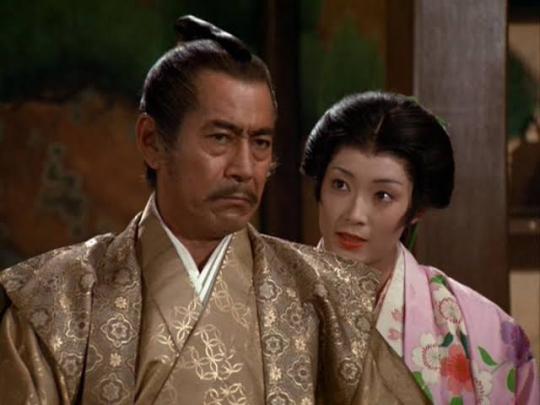

Toshiro Mifune and Yoko Shimada in #Shogun 1980.
Hiroyuki Sanada and Ana Sawai in #ShogunFX 2024 on #DisneyPlus.
Mifune and Sanada as Lord Yoshi Toranaga, inspired by the life of warlord and later shōgun, #TokugawaIeyasu in #feudalJapan, who reunified Japan in the 17th century after a long civil war (#Sengoku period). He created a new government controlled by the #Tokugawa family that ruled #Japan until 1868.
Shogun is based on #JamesClavell’s novel, a story from both Western and Japanese perspective.
https://www.worldhistory.org/Tokugawa_Ieyasu/#Echobox=1667261813
#Shogun#Shogun 1980#Shogun 2024#Toshiro Mifune#Hiroyuki Sanada#Tokugawa Ieyasu#feudal Japan#Sengoku period#James Clavell#novel#Disney Plus
11 notes
·
View notes
Text
On today's episode of gender is totally not enforced™, a growing portion of fandom discourse about the new Netflix series Blue Eye Samurai is revolving around how the main character, a gnc woman is actually a trans man. Because you know uhh, pulling off a Mulan-like scheme makes you male apparently.
#the Tokugawa period was very cruel to women sooo not wanting to be perceived as one isn't really that outrageous given cultural context#also yes she experiences osa and ofc the fandom already labeled her as a gay trans man#anyhow the portrayals of gnc women in media are great and wonderful but man is the public perception illiterate to what a woman is#anyway pls watch this show it's too good and the animation has all that#I have been a walking advert for this show lately I am spreading gospel#gender critical#female not feminine
14 notes
·
View notes
Text
Friday Night History 61, Tairadate Battery, is up! On coast artillery, Shogunate foreign policy and international learning, and one Finnish-Russian guy who sounds like a laxative superhero.
Read and listen via the link!
14 notes
·
View notes
Photo






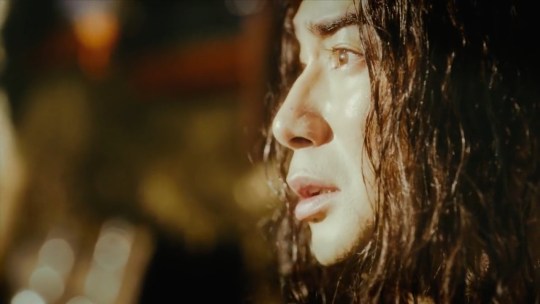
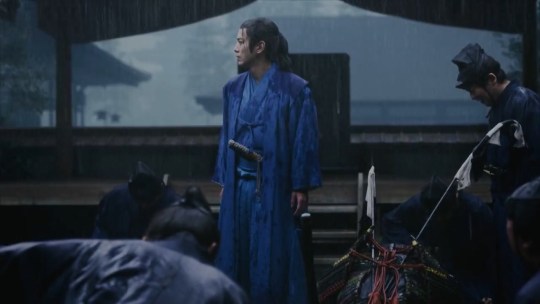

Ep. 01
#dou suru ieyasu#nhk taiga#taiga drama#jdrama#sengoku period#japan#tokugawa ieyasu#oda nobunaga#imagawa yoshimoto#takeda shingen#matsumoto jun#okada junichi#abe hiroshi#nomura mansai#caps
49 notes
·
View notes
Text
QUESTION inspector ishida is a little old man and it is very possible that the Tokugawa shogunate is less than ten years old present day. So we are only about ten years out of the constant warfare of the Sengoku period. What was Ishida doing during the Sengoku wars.
#usagi yojimbo#IS he… technically a samurai? like where do cops land on this social spectrum#extremely dumb question. did they still have cops during the sengoku period??#like i know there were a couple of ‘great unifier’ leaders before and leading up to the tokugawa shogunate#so maybe they had an established police within their own lands#and when the shogunate got established the police system got absorbed into it. and ishida got him jimbei#(i hope i spelled that right)#seriously tho. in the same way that daimyo or feudal lords still consider themselves samurai despite being a social step above them (and#presumably a shogun considers himself samurai too)#are police officers usually from the samurai class as well?#i’ve always wondered about where exactly the power levels lay whenever usagi deals with them with trepidation#then again he Is a clanless ronin#if noriyuki killed a cop in broad daylight even With self defense as a reason—exactly how much of violent reaction would that generate#i am getting off track. this started because i feel like Inshida has been an officer for like 20 yrs. way more than just 10 at least.#imagine: the age of great wars was terrible. but at least there were fewer cops around
9 notes
·
View notes
Text
A little “Today I Learned” write-up of notes regarding textiles in the Edo period:
+ The Kansai region, which is the area surrounding the imperial capital of Kyoto and the port of Osaka, was important in both the silk textile industry (mostly around Kyoto) and, after the 16th Century, the cotton industry (mostly around Osaka).
+ Cotton was introduced to Japan from Korea in the 1400s.
+ By the beginning of the Edo period (the early 1600s), cotton had become the primary material used in commoners’ clothing in most of Japan, replacing materials made from other types of plant fibers.
That’s not to say things weren’t still commonly made from asa (hemp or ramie) or from other plant fibers such as mulberry or wisteria - they were, especially in rural areas - but the more expensive cotton quickly became the most common choice.
On a side note: in some translations, you might see the English word linen as a translation for asa, which isn’t technically correct as linen is made from flax, which was not cultivated in Edo period Japan. The first flax in Japan is grown in Hokkaido in 1871.
+ Aside from the large amounts of cotton planted for the cotton textile trade, it was often grown in small quantities sufficient just for household consumption.
+ The Edo period and its bureaucracies placed a great deal of emphasis on laws and regulations that reinforced class structure, such as Aizu’s rules specifying which color haori-himo could be worn by which class of samurai, or Tosa’s rules forbidding low-ranking samurai from wearing certain footwear.
One sumptuary law passed by the Tokugawa shogunate limited purple outer garments to nobility and high-ranking samurai. Another banned the wearing of red outer garments, which were dyed with expensive saffron dye.
However, because those restrictions didn’t apply to inner linings or undergarments, wealthy commoners and low-ranking samurai families still found creative ways to incorporate these colors into their clothing.
On a side note: This is a good article on how silly sumptuary regulations got during the Edo period. Things like roof beam length, gold leaf decoration on household goods, and clothing materials could get you arrested.
+ On the other end of the spectrum, garments dyed blue using indigo were always a safe choice for the masses, from the lower ranks of samurai to the very bottom rungs of Edo society.
Indigo was inexpensive and could be used to produce a large variety of blue shades which, combined with the right materials and patterns, decorations, or embroideries could make up garments from the cheapest everyday kimono of a farmer to the fine silks of a wealthy merchant’s wife.
But, your choice of textiles could also easily oust you as a country bumpkin in the big city. Reportedly, even Edo’s teahouse girls laughed at samurai whose haori were lined in the cheap blue fabrics. (If I find the source again, there was an insult along the line of “blue sleeves”, but I don���t want to misquote it.)
+ There are no powered looms to produce textiles until after the Meiji restoration. The first powered looms are introduced to Japan in the 1870s but do not come into widespread use until the 1910s.
+ There is no domestic wool production during the Edo period: wool fabrics had to be imported, which made them expensive and rarely used. However, there is some wool use during the Edo period, specifically in samurai’s fire costumes (火事装束, kaji shozuku), obviously for practical reasons since wool is not as flammable as cotton or silk, and in travel cloaks. Wool becomes more common with the Meiji restoration, first to make Western-style uniforms and later to produce general Western-style clothing for those who could afford it.
(How did you stay warm and dry? Padded kimono (not unlike its modern cousin, the hanten jacket) and kamiko (paper fabrics). Here’s a neat article on kamiko.
#history notes#historical notes#history reference#historical reference#history research#historical research#edo period#tokugawa period#japanese history#japanese textiles#clothing#textiles#TIL#today I learned
48 notes
·
View notes
Text

Tsunayoshi spared no expense to the goodist of boys in his kingdom!🐕
🐶🇯🇵🐶
#history#japan#tokugawa tsunayoshi#dogs#shogun#animal history#puppy love#the dog shogun#politics#animal care#dog lover#japanese history#edo period#dog shelter#dog girl#animals#royalty#royal history#ruler#laws#nickys facts
11 notes
·
View notes
Text
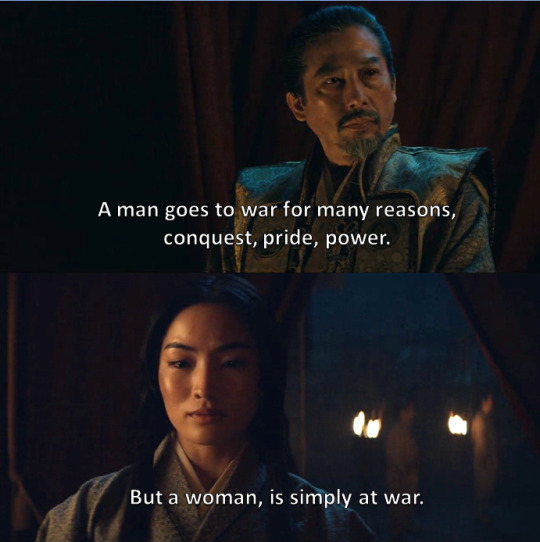

Shogun (2024) / Awaiting Kirin (2020)
There will always be war between good and evil. The evil will forever want to dominate, abuse and exploit others. The good will always want to fight back, demand justice and protect their families.
Akechi Mitsuhide (the man that inspires the character of Mariko's father) used to believe Oda Nobunaga to be the one to unify the warring states and usher an era of peace but Oda got greedy.
Akechi began to plot against Oda after he ordered the killings of monks, peasants, women and children on Mount Hiei, to send a message to his enemies of the consequences of their defiance.
At the time, Akechi was in contact with Tokugawa Ieyasu (Toranaga). When Akechi knew that Tokugawa would be the one to unify Japan, Akechi risk his own life to remove Oda to clear the path for him.
Tokugawa laid low when Akechi overthrew Oda. When Hideyoshi (Taiko) returns to avenge Oda, he kills everyone except Tokugawa who was "neutral" when in fact he was bidding his time to take over.
Which is why in the show, Shogun, Toranaga is close to Mariko (Akechi's daughter) and is growing impatient as he wants to remove the remnants of the Taiko and Oda as quickly as possible.
Lady Ochiba (Taiko's Consort) knows of Toranaga's true intentions, which is why she fully distrust and hate him, that she could not wait any longer and push Ishido and the Council to move quickly.
[You know, it would've been cool if they got Hiroki Hasegawa to play Akechi in Shogun! I've watched several actors playing Akechi, but Hiroki Hasegawa managed to nail the conflicted character nicely!)
#shogun#shogun fx#shogun 2024#anna sawai#hiroyuki sanada#awaiting kirin#kirin ga kuru#akechi mitsuhide#hiroki hasegawa#period drama#historical drama#taiga drama#japanese drama#samurai#sengoku jidai#oda nobunaga#toyotomi hideyoshi#tokugawa ieyasu#jidaigeki
19 notes
·
View notes
Text

@microtonal still shadowbanned so i can't reply on the post but exactly. ppl forget that america did not just instantly become a world power as soon as it was founded?? the british empire held major influence throughout the entire world for hundreds of years (and still does today in a lot of places). did u consider that maybe historians have their jobs for a reason and they make collective decisions for terminology based on previous research and analysis? insane
#pers#'late tokugawa period america' as though the japanese somehow colonized america instead of it being the other way around. what on earth
5 notes
·
View notes